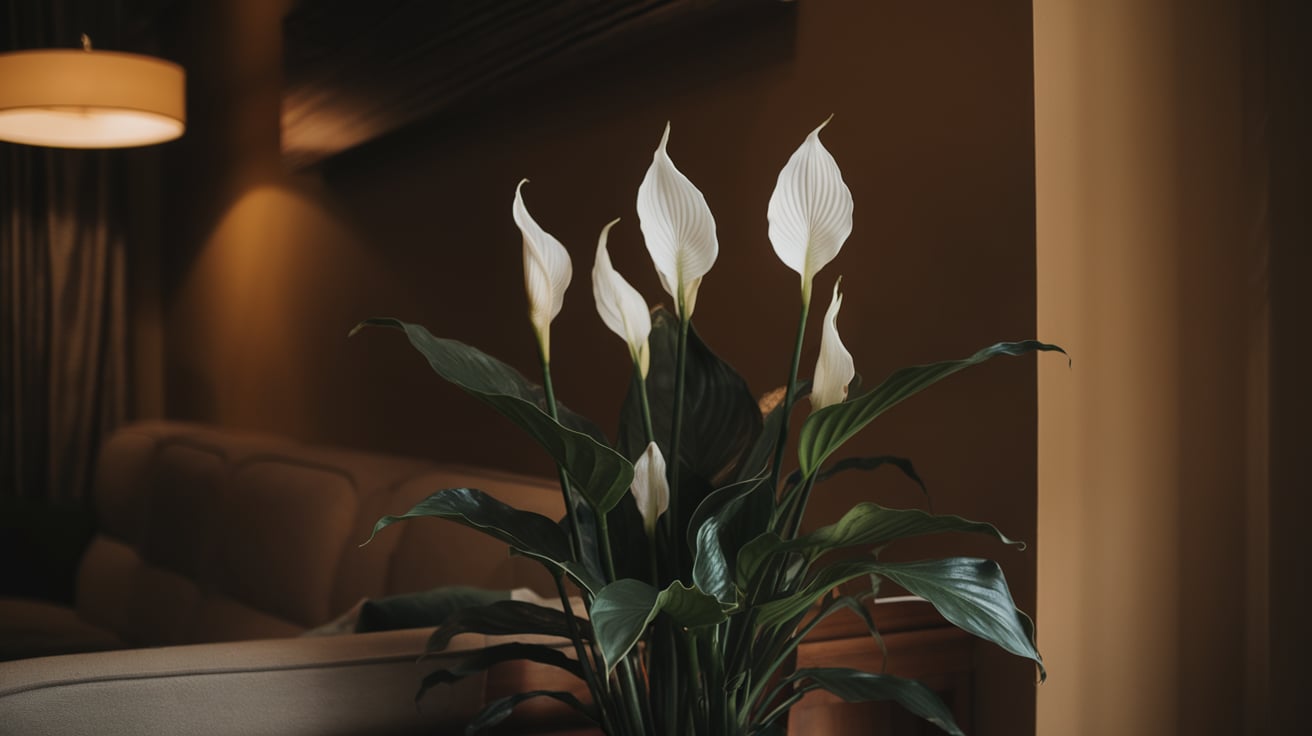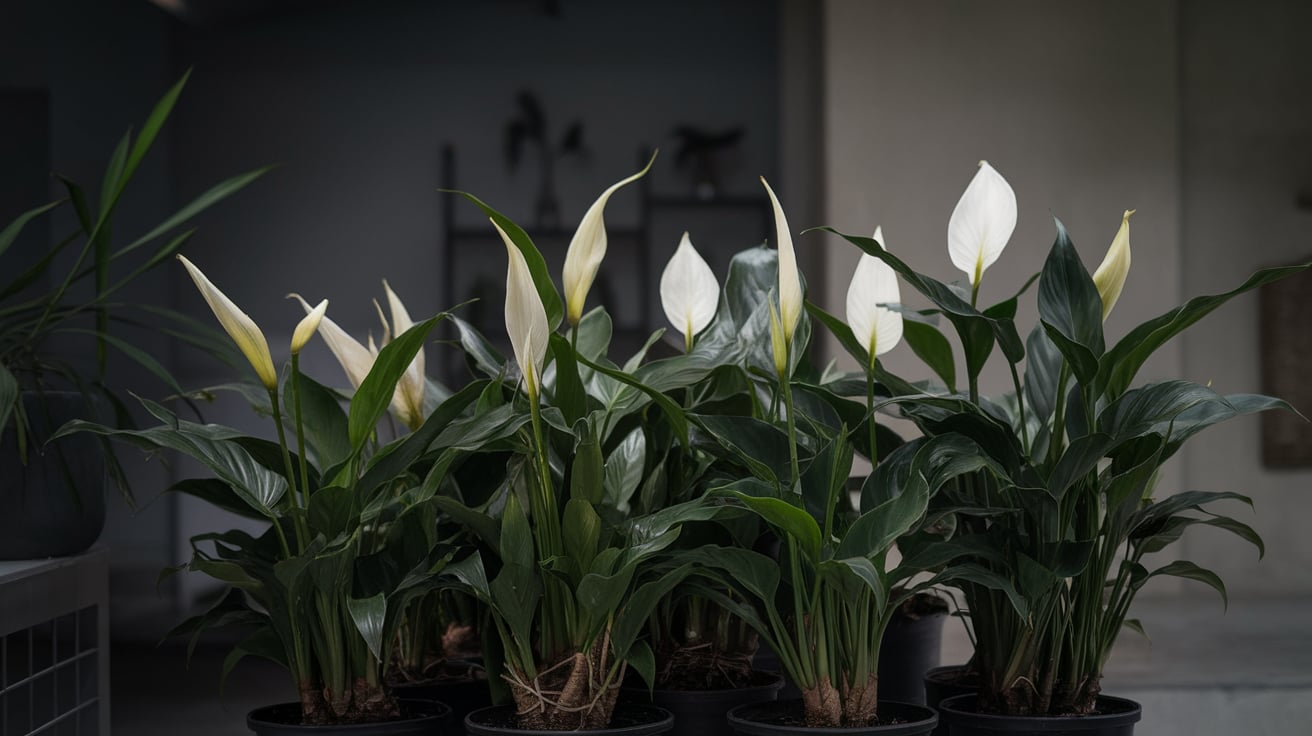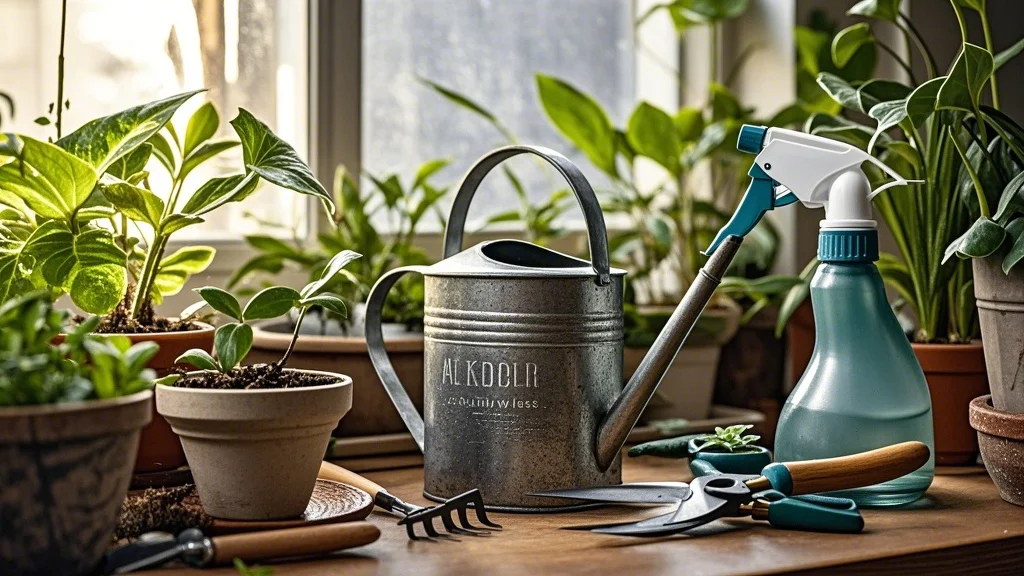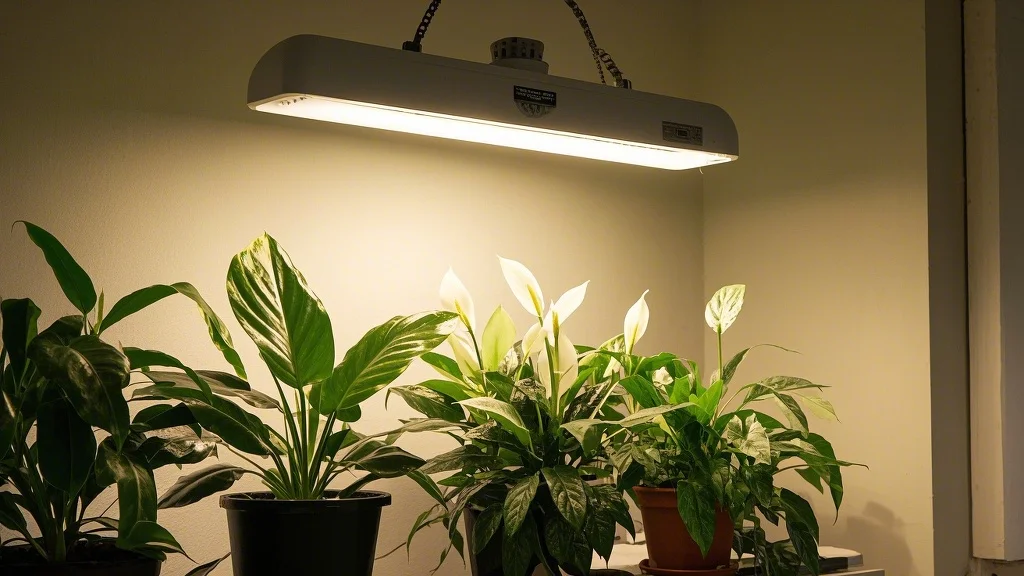Peace lilies (Spathiphyllum) have earned their reputation as one of the most adaptable and forgiving houseplants, particularly for those dealing with challenging low-light environments. These elegant plants with their glossy dark green leaves and distinctive white “flowers” (actually modified leaves called spathes) bring a touch of sophistication to dim corners where few other plants would thrive.
For apartment dwellers with north-facing windows or office workers stationed far from natural light, peace lilies offer a rare opportunity to enjoy not just foliage but also beautiful blooms in less-than-ideal conditions. While they certainly appreciate brighter indirect light, peace lilies can survive and even flower in surprisingly dim settings with the right care approach.
This guide will walk you through everything you need to know about nurturing these resilient plants in low light, with special focus on encouraging those coveted white blooms even when sunlight is scarce.
Contents
Understanding Peace Lily Light Requirements

What Constitutes “Low Light” for Peace Lilies
Before diving into care specifics, it’s important to understand what “low light” actually means for peace lilies:
- True low light: Areas 6-10 feet from a north-facing window, interior hallways, or offices with minimal natural light
- Medium-low light: Spots near north-facing windows or several feet away from east/west windows
- Filtered light: Areas near windows with sheer curtains or partial shade
Peace lilies can survive in true low light conditions, but they typically bloom best in medium-low to filtered light. That said, with proper care techniques, you can still encourage flowering even in dimmer settings.
Signs Your Peace Lily Needs More Light
While adaptable to low light, peace lilies will communicate when light levels are too low:
- Leggy, stretched growth reaching toward light sources
- Smaller leaves than usual
- Yellowing older leaves (beyond normal aging)
- Significantly reduced or absent flowering
- Dark green leaves turning a deeper, almost blackish green
If you notice these signs, your peace lily may benefit from a slight light upgrade, even if that means moving it a few feet closer to a window or supplementing with artificial light.
Essential Care for Low-Light Peace Lilies
Watering in Low Light Conditions
One of the most critical adjustments for peace lilies in low light is modifying your watering routine:
- Reduced frequency: Plants in low light transpire less and use water more slowly. Allow the top inch of soil to dry out completely before watering.
- Moisture monitoring: Check soil moisture with your finger or a moisture meter rather than watering on a schedule.
- Seasonal adjustments: Further reduce watering in winter when growth naturally slows.
- Water quality: Use room temperature, filtered water when possible, as peace lilies are sensitive to chemicals in tap water.
The classic peace lily droop is your plant’s built-in watering indicator—when leaves begin to sag slightly, it’s time to water. However, try not to wait until the plant is completely wilted, as repeated dramatic wilting can stress the plant.
Soil and Potting Considerations
Low-light peace lilies benefit from specialized soil considerations:
- Well-draining mix: Use a quality indoor potting mix with added perlite to prevent waterlogging, which is more likely in low-light conditions.
- Pot size: Choose a container just 1-2 inches larger than the root ball—oversized pots retain excess moisture.
- Pot material: Terra cotta pots can help prevent overwatering by wicking away excess moisture.
- Drainage: Ensure your pot has adequate drainage holes to prevent root rot.
Consider repotting every 2-3 years or when the plant becomes root-bound, which can be recognized by roots circling the bottom of the pot or growing through drainage holes.
Humidity Requirements
Peace lilies are tropical plants that appreciate humidity, which becomes even more important in low-light settings:
- Target humidity: Aim for 40-60% humidity for optimal health.
- Increasing humidity: Use a small humidifier, pebble trays with water, or group plants together.
- Misting: While not as effective as other methods, occasional misting can provide temporary humidity.
- Avoid drafts: Keep peace lilies away from heating vents, air conditioners, or drafty windows.
Higher humidity can help compensate for lower light levels by reducing stress on the plant and creating more favorable growing conditions.
Temperature Considerations
Peace lilies prefer consistent temperatures:
- Ideal range: 65-80°F (18-27°C)
- Minimum temperature: Never below 55°F (13°C)
- Avoid fluctuations: Sudden temperature changes can stress the plant and reduce flowering
In low light conditions, be especially mindful of cold drafts from windows or doors, as reduced light combined with cold stress can significantly impact plant health.
Fertilizing for Blooms in Low Light
Adjusted Fertilizing Schedule
Low-light peace lilies require a modified fertilizing approach:
- Reduced frequency: Fertilize every 8-10 weeks during growing season (spring through early fall), rather than the standard 4-6 weeks for plants in brighter conditions.
- Winter dormancy: Stop fertilizing completely from late fall through winter.
- Diluted strength: Use fertilizer at half the recommended strength to prevent salt buildup.
Best Fertilizers for Low-Light Blooming
Choose fertilizers specifically formulated to encourage flowering:
- Balanced formula: Look for a 10-10-10 or similar balanced fertilizer.
- Phosphorus boost: When trying to encourage blooms, consider a formula with slightly higher phosphorus (the middle number), such as 7-14-7.
- Organic options: Fish emulsion or seaweed fertilizers provide gentle nutrition less likely to burn roots.
Slow-release fertilizer pellets can be particularly effective for low-light peace lilies, providing a steady supply of nutrients without the risk of over-fertilization.
Encouraging Blooms Despite Minimal Light
Strategic Light Positioning
Maximize the limited light available:
- Rotate regularly: Turn your plant a quarter turn weekly to ensure even growth.
- Seasonal adjustments: Move your peace lily closer to windows during winter months when light levels naturally decrease.
- Reflective surfaces: Place mirrors or white surfaces near your plant to bounce available light.
- Clean leaves: Dust leaves monthly with a damp cloth to maximize light absorption.
Supplemental Lighting Options
When natural light is insufficient, consider artificial lighting:
- LED grow lights: Energy-efficient and produce minimal heat; look for full-spectrum options.
- Fluorescent lights: Standard office fluorescents can benefit peace lilies if placed within 12-24 inches.
- Light duration: Provide 12-14 hours of artificial light daily.
- Light distance: Position lights 12-24 inches above the plant, adjusting based on the light’s intensity.
Even just 4-6 hours of supplemental lighting can significantly increase blooming potential in otherwise dim locations.
Bloom-Inducing Techniques
Try these specialized approaches to encourage flowering:
- Bloom boosters: Apply a phosphorus-rich fertilizer or specific bloom booster product in early spring.
- Temporary brightness: Move your peace lily to a brighter location (still indirect light) for 2-3 weeks when you notice flower buds forming.
- Stress reduction: Ensure the plant isn’t rootbound, which can inhibit flowering.
- Consistent care: Avoid dramatic changes in care routine, as peace lilies prefer stability.
Remember that even with perfect care, peace lilies in very low light may produce fewer blooms than those in brighter conditions—but with patience, you can still enjoy their elegant flowers.
Common Low-Light Peace Lily Problems
Troubleshooting Growth Issues
Address these common problems in low-light settings:
- Leggy growth: Prune elongated stems and provide slightly more light if possible.
- Pale leaves: Usually indicates too much light; move further from windows or add a sheer curtain.
- Brown leaf tips: Often caused by low humidity or chemical buildup from tap water; increase humidity and switch to filtered water.
- Yellow leaves: In low light, usually indicates overwatering; reduce watering frequency and ensure proper drainage.
Pest Management in Low Light
Low-light conditions can sometimes increase pest vulnerability:
- Spider mites: More common in dry, low-light environments; increase humidity and wipe leaves regularly.
- Mealybugs: Appear as white, cotton-like clusters; treat with insecticidal soap or neem oil.
- Scale insects: Look for brown bumps on stems and leaf undersides; remove with cotton swabs dipped in alcohol.
- Fungus gnats: Often indicate overwatering; allow soil to dry more between waterings and consider a soil drench with diluted hydrogen peroxide.
Inspect your peace lily regularly, as early detection is crucial for effective pest management, especially when plants are already stressed by low light.
Addressing Bloom Decline
If your peace lily was blooming but has stopped:
- Seasonal patterns: Peace lilies naturally bloom less in fall and winter; this is normal.
- Light threshold: The plant may have dropped below its minimum light requirements; try supplemental lighting.
- Fertilizer needs: The plant may have depleted available phosphorus; apply a bloom-specific fertilizer.
- Age factors: Older peace lilies may bloom less frequently; division can rejuvenate flowering.
Long-Term Care and Maintenance
Pruning and Cleaning
Regular maintenance helps low-light peace lilies thrive:
- Remove spent blooms: Cut flower stalks at the base once they begin to turn green or brown.
- Trim damaged leaves: Remove yellow or brown leaves at the base to encourage new growth.
- Clean dust: Wipe leaves monthly with a damp cloth to maximize light absorption and prevent pests.
- Inspect regularly: Check the undersides of leaves and leaf joints for early signs of pests.
Division and Repotting
Even in low light, peace lilies eventually need division:
- Timing: Divide every 2-3 years or when the plant becomes crowded.
- Process: Remove from pot, gently separate clumps ensuring each has adequate roots and leaves, and repot in fresh soil.
- Recovery: Provide slightly increased attention after division, maintaining consistent moisture and stable conditions.
Division not only keeps the plant healthy but often stimulates new growth and flowering.
Seasonal Care Adjustments
Modify your care routine throughout the year:
- Spring/Summer: Slightly increase watering and resume regular fertilizing schedule.
- Fall/Winter: Reduce watering frequency, stop fertilizing, and move closer to light sources if possible.
- Growth periods: Be alert for new growth spurts, which may indicate a need for slightly more water.
Creating the Ideal Low-Light Environment
Complementary Plants
Create a thriving low-light plant community:
- Plant grouping: Place peace lilies with other humidity-loving, low-light plants like pothos, ZZ plants, or snake plants.
- Tiered arrangements: Position peace lilies on stands or shelves to maximize light exposure in multi-plant setups.
- Aesthetic combinations: Pair with plants of contrasting textures and forms for visual interest.
Decorative and Functional Accessories
Enhance your peace lily’s environment:
- Decorative pebble trays: Combine humidity support with aesthetic appeal.
- Stylish grow lights: Choose designer-friendly LED options that blend with your decor.
- Self-watering devices: Consider self-watering pots or water globes for consistent moisture.
- Decorative moss: Top-dress with preserved moss to retain soil moisture and add visual appeal.

Conclusion
Peace lilies truly earn their reputation as exceptional low-light plants, capable of not just surviving but potentially thriving in dim conditions that would challenge most flowering houseplants. While they may not bloom as prolifically as their bright-light counterparts, with the specialized care techniques outlined in this guide, you can still enjoy their elegant white spathes even in challenging environments.
Remember that patience is key—peace lilies in low light may take longer to produce blooms, but the reward is well worth the wait. By understanding their unique needs and making small adjustments to their care, you can create an environment where these adaptable plants can showcase their full beauty, bringing a touch of tropical elegance to even the darkest corners of urban living spaces.
Whether gracing your office desk far from windows or brightening a dim apartment hallway, peace lilies stand as living proof that with the right approach, you can enjoy flowering houseplants even in less-than-ideal lighting conditions.









